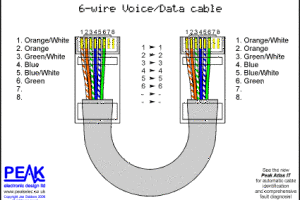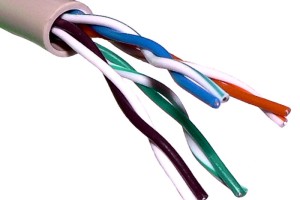Understanding Network Cabling Basics
When hanging out in a room of technologically savvy individuals, it’s pretty standard for those few of us near computer illiterate people left in the world to sagely nod our heads and go along with whatever is being said. ‘Oh, your patch cable is malfunctioning? I hate it when mine do that — especially the purple ones.’ Hopefully, the next few paragraphs will give a basic understanding of network cabling and structured cabling systems. You may still sound a bit like an imbecile at a nerdy party, but at least you’ll be able to grasp the basics in the conversation.
So, what exactly is network cabling? Basically, it’s what allows your computers to talk to each other, to the internet, to the printer, and other devices. Cables are a way of sending information. And a network generally encompasses whatever you want to be connected and sharing information. There are many different kinds of network cables and most systems include a variety to meet all their needs. Every structured cabling system has it’s own specific design due to the architecture it has to work around, the products being used, what the products will support, what exactly the system is trying to provide, and the manufacturer warranties.
A structured cabling system will be comprised of many different smaller systems working together for a main goal. A telecommunications room is where most of the data equipment is kept. The point at which the building connects with the outside world is classified as the entrance facilities. At this point the cabling often needs to change from indoor to outdoor cabling, with the consideration of fire-rated cable depending on the building code. The equipment rooms house the rest of the necessary equipment and serve the users within the office or building. There will be backbone cabling which is used to connect signals to other all areas in a building. The backbone cables handle all of the major traffic, and can also stretch between buildings. In the telecommunications room, the horizontal cabling connects the to each outlet on the floor. The last sub system is the work area components, which allow people to connect their machines and equipment to the outlets in the horizontal cabling system.
Within these subsystems, many different types of cables are used. The most common are a combination of twisted pair cables, coaxial cables, optical fiber cables, and Ethernet crossover cables. These few just barely skim the surface of all there is to offer and choose from. But systems employ a combination of these. The Ethernet crossover cable may sound the most familiar, because before wireless was made so popular, Ethernet used to be the only way to connect a computer to a network. The crossover cables enable computers to connect using their network adaptors, and make routers and network switches redundant.
The American National Standards Institute provides standards for U.S. cabling companies to abide by and maintain. They define how cable must be layer, where it has to be connected, where it can be layer, etc. These standards help keep a consistency among so many different network cabling providers, and also help maintain an industry wide documentation that is easy to understand.




